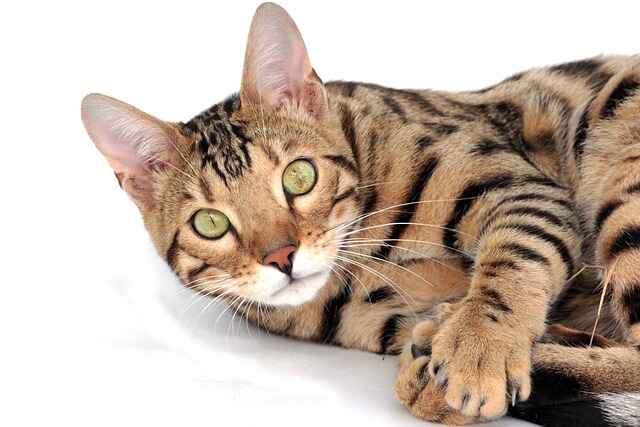
How much are Bengal kittens worth?
How much are Bengal kittens worth?
Bengal kittens are a unique and sought-after breed known for their distinctive coat patterns and lively personalities. If you’re considering adding a Bengal kitten to your family, it’s important to understand the various factors that can influence the cost of acquiring one of these beautiful felines. In this article, we’ll explore the different elements that contribute to the price of Bengal kittens, as well as additional costs to consider and where to find Bengal kittens for sale.
Introduction
Bengal kittens are the offspring of Bengal cats, a breed that was developed by crossing domestic cats with the Asian leopard cat. Known for their striking coat patterns that resemble those of wild leopard cats, Bengal kittens are highly energetic, intelligent, and playful.
Cost Factors for Bengal Kittens
Breeder Reputation and Experience
One of the primary factors that can influence the cost of Bengal kittens is the reputation and experience of the breeder. Established and reputable breeders who prioritize the health and well-being of their cats may charge higher prices for their kittens.
Bengal Kitten Quality
The quality of a Bengal kitten, particularly in terms of its adherence to the breed standard and desirable traits such as contrast, clarity, and pattern flow, can impact its price. Kittens that closely align with the breed standard and exhibit desirable characteristics may command higher prices.
Pedigree and Bloodline
Bengal kittens with strong pedigrees and impressive bloodlines may be more expensive than those without documented lineage. Pedigree cats often have a documented ancestry that includes championship or grand championship titles, which can contribute to their value.
Coat Color and Pattern
The coat color and pattern of a Bengal kitten can also play a role in determining its price. Rarer or more unusual coat colors and patterns may be associated with higher costs, as they are in greater demand among prospective cat owners.
Health and Genetic Testing
Responsible breeders conduct health and genetic testing to ensure that their Bengal kittens are free from hereditary conditions and genetic disorders. Kittens that have been screened for such health concerns may be priced higher due to the investment in their health and well-being.
Average Price Range for Bengal Kittens
Pet Quality Bengals
On average, pet quality Bengal kittens typically range in price from $800 to $2000, though prices can vary based on the factors mentioned above. Pet quality Bengals are well-suited for loving homes as companions and may have minor deviations from the breed standard.
Show Quality Bengals
Show quality Bengal kittens, which possess exceptional traits and closely adhere to the breed standard, often command higher prices ranging from $1500 to $4000 or more. These kittens are typically sought after by breeders and exhibitors who intend to showcase them in cat shows.
Additional Costs to Consider
Initial Vaccinations and Deworming
Upon acquiring a Bengal kitten, it’s essential to factor in the cost of initial vaccinations and deworming treatments to safeguard the kitten’s health.
Spaying or Neutering
Responsible pet ownership entails spaying or neutering your Bengal kitten to prevent unplanned litters and contribute to population control efforts. The cost of this procedure should be considered when budgeting for a new kitten.
Supplies and Accessories
Investing in essential supplies and accessories such as a litter box, scratching posts, bedding, toys, and feeding dishes is an additional cost to prepare for when bringing a Bengal kitten into your home.
Ongoing Expenses for Food and Healthcare
Ongoing expenses for high-quality cat food, routine veterinary care, flea and tick prevention, and other healthcare needs should be factored into the overall cost of owning a Bengal kitten.
Where to Find Bengal Kittens for Sale
Reputable Bengal Breeders
When seeking Bengal kittens for sale, it’s advisable to connect with reputable breeders who prioritize ethical breeding practices, proper socialization of their kittens, and comprehensive healthcare protocols.
Rescue Organizations and Shelters
Another option for acquiring a Bengal kitten is to explore rescue organizations and animal shelters that may have Bengals available for adoption. This can be a rewarding way to provide a loving home to a cat in need.
Conclusion
Summary of Bengal kitten pricing factors
The cost of Bengal kittens can vary widely based on factors such as breeder reputation, kitten quality, pedigree, coat color and pattern, and health testing. Understanding these factors can help prospective owners make informed decisions when acquiring a Bengal kitten.
Importance of thorough research and responsible ownership
Before bringing a Bengal kitten into your home, it’s crucial to conduct thorough research, carefully consider the associated costs, and commit to providing a loving and responsible environment for your new feline companion.
In conclusion, the acquisition of a Bengal kitten involves various cost considerations, but the joy and companionship they bring are priceless. By understanding the factors that influence pricing and preparing for the responsibilities of ownership, prospective Bengal kitten owners can embark on this exciting journey with confidence and enthusiasm.









[…] Which foreign pets are legal in Washington State? […]